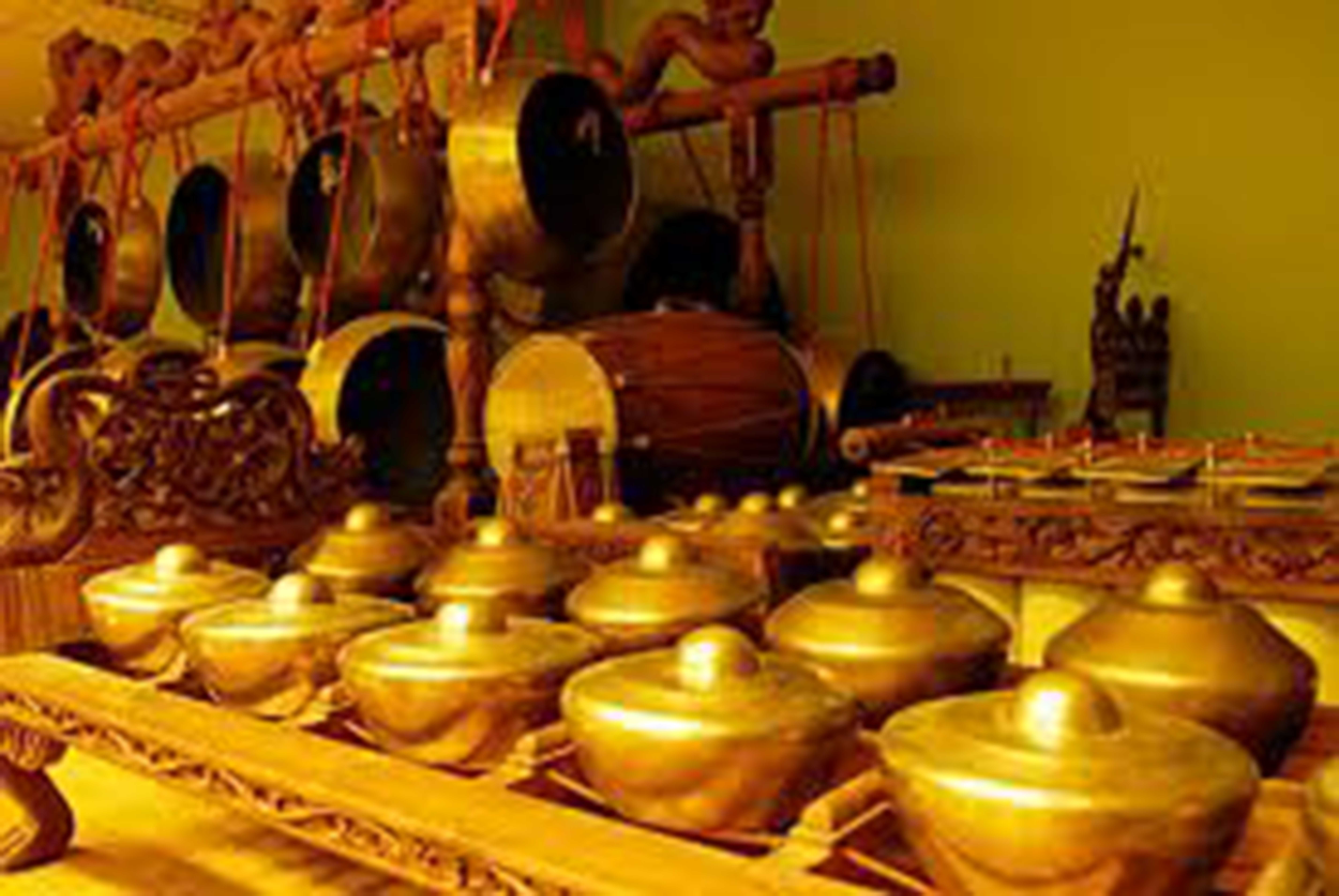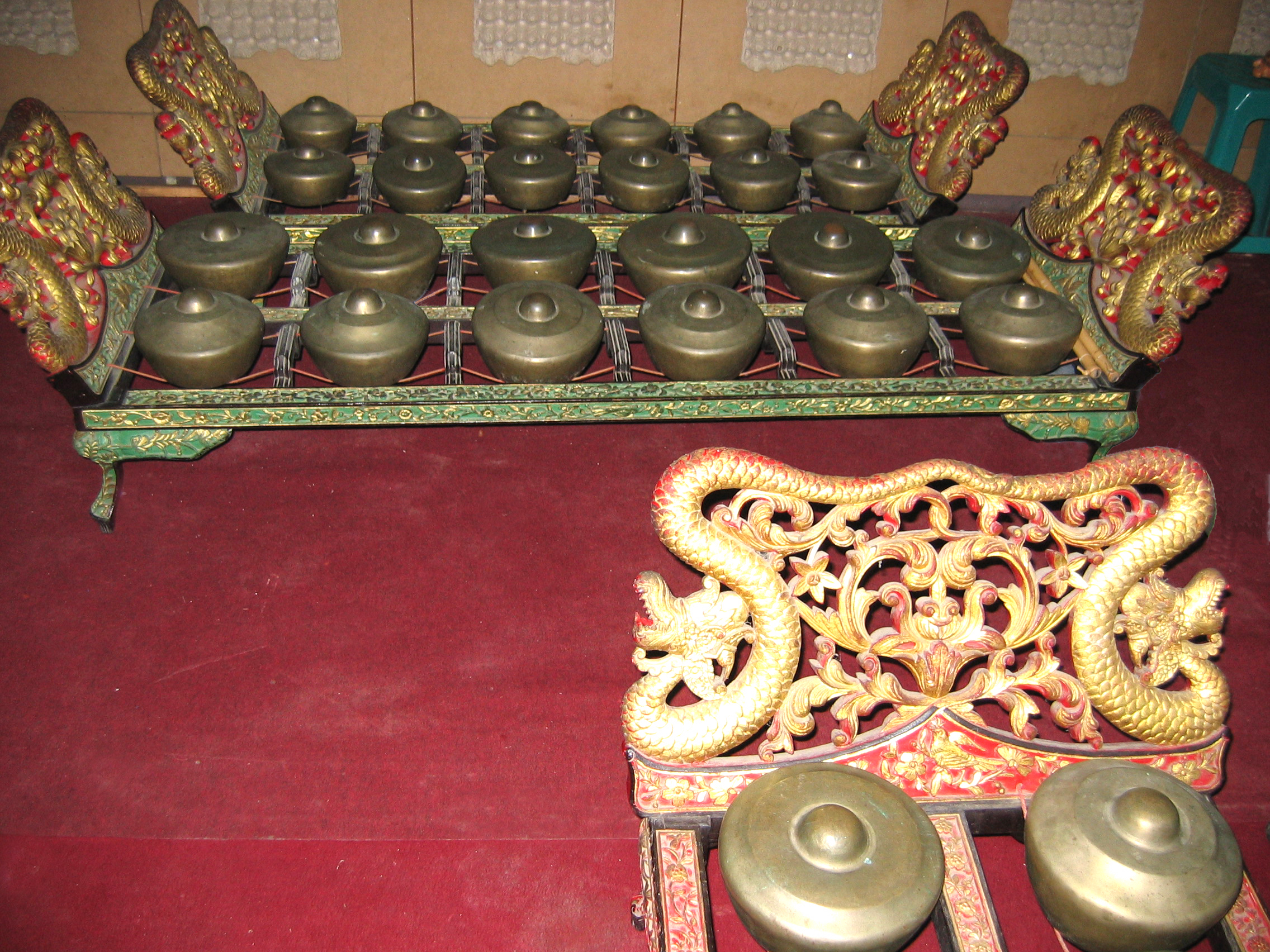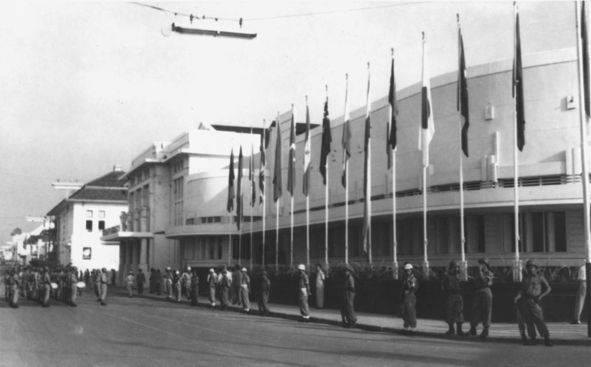|
Gamelan Degung
''Gamelan degung'' is a form of Sundanese musical ensemble that uses a subset of modified gamelan instruments with a particular mode of '' degung'' scale. The instruments are manufactured under local conditions in towns in West Java such as Bogor and Bandung. ''Degung'' music is often played at public gatherings in West Java, such as at local elections, as well as many other events. There is international interest in ''degung'' as well among communities in other countries interested in Indonesia and gamelan music.Dewi Anggraeni"Melbourne: Gamelan, elephants and 'Jackpot'" , ''The Jakarta Post'', 22 February 2004. Gamelan degung also playable in '' madenda'' scale, which included in the set as a complementary tone, usually marked as -3/''ni'' tone in the set. Playing gamelan degung in this scale requires the substitution of the 3/''na'' metal bars into -3/''ni'' tone on all instruments. Instruments The instrumentation of ''gamelan degung'' is quite flexible. It may include: ... [...More Info...] [...Related Items...] OR: [Wikipedia] [Google] [Baidu] |
Sundanese People
The Sunda or Sundanese ( id, Orang Sunda; su, ᮅᮛᮀ ᮞᮥᮔ᮪ᮓ, Urang Sunda) are an indigenous ethnic group native to the western region of Java island in Indonesia, primarily West Java. They number approximately 42 million and form Indonesia's second most populous ethnic group. They speak the Sundanese language, which is part of the Austronesian languages. The western third of the island of Java, namely the provinces of West Java, Banten, and Jakarta, as well as the westernmost part of Central Java, is called by the Sundanese people ''Tatar Sunda'' or ''Pasundan'' (meaning Sundanese land). Sundanese migrants can also be found in Lampung and South Sumatra, and to a lesser extent in Central Java and East Java. The Sundanese people can also be found on several other islands in Indonesia such as Sumatra, Kalimantan, Sulawesi, Bali and Papua. Origins Migration theories The Sundanese are of Austronesian origins and are thought to have originated in Taiwan. T ... [...More Info...] [...Related Items...] OR: [Wikipedia] [Google] [Baidu] |
Gamelan Semar Pegulingan
Gamelan semar pegulingan is an old variety of the Balinese gamelan. Dating back from around the 17th century, the style is sweeter and more reserved than the more popular and progressive Gamelan Gong Kebyar. Semar pegulingan is derived from the ancient flute ensemble gamelan gambuh which utilizes a 7 tone scale. Semar pegulingan also uses the 7 tone scale which enables several pathet (similar to modes or scales) to be played. Semar is the name of the Hindu God of love and pegulingan means roughly 'laying down'. It was originally played near the sleeping chambers of the palace to lull the king and his concubines to sleep. The ensemble includes suling, various small percussion instruments similar to sleigh bells and finger cymbals, and trompong - a row of small kettle gongs that play the melody. A similar type of ensemble, Gamelan Pelegongan, substitutes a pair of gendérs for the trompong as the melody carrier and plays the music for a set of dances known as legong. In mediae ... [...More Info...] [...Related Items...] OR: [Wikipedia] [Google] [Baidu] |
Gong Ageng
The gong ageng (or gong gedhe in Ngoko Javanese, means large gong) is an Indonesian musical instrument used in the Javanese gamelan. It is the largest of the bronze gongs in the Javanese and Balinese gamelan orchestra and the only large gong that is called ''gong'' in Javanese.Lindsay, Jennifer (1992). ''Javanese Gamelan'', p.10-11. . "The largest phrase of a gamelan melody is marked by the deepest sounding and largest instrument, the large gong or ''gong ageng''....The ''gong ageng'' is made of bronze..." Unlike the more famous Chinese or Turkish tam-tams, Indonesian gongs have fixed, focused pitch, and are dissimilar to the familiar crash cymbal sound. It is circular, with a conical, tapering base of diameter smaller than gong face, with a protruding polished boss where it is struck by a padded mallet. Gongs with diameter as large as have been created in the past, but gongs larger than about are more common especially to suit the budget of educational institutions.Wasist ... [...More Info...] [...Related Items...] OR: [Wikipedia] [Google] [Baidu] |
Saron Panerus
The saron is a musical instrument of Indonesia, which is used in the gamelan. It normally has seven bronze bars placed on top of a resonating frame (''rancak''). It is usually about 20 cm (8 in) high, and is played on the floor by a seated performer. In a pelog scale, the bars often read 1-2-3-5-6-7 across (the number four is not used because of its relation to death) (in kepatihan numbering); for slendro, the bars are 6-1-2-3-5-6-1; this can vary from gamelan to gamelan, or even among instruments in the same gamelan. Slendro instruments commonly have only six keys. It provides the core melody ( balungan) in the gamelan orchestra. Varieties Sarons typically come in a number often sizes, from smallest to largest: *Saron panerus (also: peking) *Saron barung (sometimes just saron) *Saron demung (often just called demung) Each one of those is pitched an octave below the previous. The slenthem or slentho performs a similar function to the sarons one octave below the ... [...More Info...] [...Related Items...] OR: [Wikipedia] [Google] [Baidu] |
Saron (instrument)
The saron is a musical instrument of Indonesia, which is used in the gamelan. It normally has seven bronze bars placed on top of a resonating frame (''rancak''). It is usually about 20 cm (8 in) high, and is played on the floor by a seated performer. In a pelog scale, the bars often read 1-2-3-5-6-7 across (the number four is not used because of its relation to death) (in kepatihan numbering); for slendro, the bars are 6-1-2-3-5-6-1; this can vary from gamelan to gamelan, or even among instruments in the same gamelan. Slendro instruments commonly have only six keys. It provides the core melody (balungan) in the gamelan orchestra. Varieties Sarons typically come in a number often sizes, from smallest to largest: *Saron panerus (also: peking) *Saron barung (sometimes just saron) *Saron demung (often just called demung) Each one of those is pitched an octave below the previous. The slenthem or slentho performs a similar function to the sarons one octave below the ... [...More Info...] [...Related Items...] OR: [Wikipedia] [Google] [Baidu] |
Bonang
The bonang is an Indonesian musical instrument used in the Javanese gamelan. It is a collection of small gongs (sometimes called "kettles" or "pots") placed horizontally onto strings in a wooden frame (''rancak''), either one or two rows wide. All of the kettles have a central boss, but around it the lower-pitched ones have a flattened head, while the higher ones have an arched one. Each is tuned to a specific pitch in the appropriate scale; thus there are different bonang for pelog and slendro. They are typically hit with padded sticks (''tabuh''). This is similar to the other cradled gongs in the gamelan, the kethuk, kempyang, and kenong. Bonang may be made of forged bronze, welded and cold-hammered iron, or a combination of metals. In addition to the gong-shaped form of kettles, economical bonang made of hammered iron or brass plates with raised bosses are often found in village gamelan, in Suriname-style gamelan, and in some American gamelan. In central Javanese gam ... [...More Info...] [...Related Items...] OR: [Wikipedia] [Google] [Baidu] |
Bandung
Bandung ( su, ᮘᮔ᮪ᮓᮥᮀ, Bandung, ; ) is the capital city of the Indonesian province of West Java. It has a population of 2,452,943 within its city limits according to the official estimates as at mid 2021, making it the fourth most populous city in Indonesia. Greater Bandung (Bandung Basin Metropolitan Area/BBMA) is the country's third-largest metropolitan area, with nearly nine million inhabitants. Located above sea level, the highest point in the North area with an altitude of 1,050 meters and the lowest in the South is 675 meters above sea level, approximately southeast of Jakarta, Bandung has cooler year-round temperatures than most other Indonesian cities. The city lies on a river basin surrounded by volcanic mountains that provides a natural defence system, which was the primary reason for the Dutch East Indies government's plan to move the capital from Batavia (modern-day Jakarta) to Bandung. The Dutch first established tea plantations around the moun ... [...More Info...] [...Related Items...] OR: [Wikipedia] [Google] [Baidu] |
Bogor
Bogor ( su, , nl, Buitenzorg) is a city in the West Java province, Indonesia. Located around south of the national capital of Jakarta, Bogor is the 6th largest city in the Jakarta metropolitan area and the 14th overall nationwide. Estimasi Penduduk Menurut Umur Tunggal Dan Jenis Kelamin 2014 Kementerian Kesehatan The city covers an area of 118.50 km2, and it had a population of 950,334 in the 2010 Census and 1,043,070 in the 2020 Census.Badan Pusat Statistik, Jakarta, 2021. The official estimate for mid 2022 is 1,099,422. Bogor is an important economic, scientific, cultural, and tourist center, as well as a mountain resort. During the |
Pelog
Pelog ( su, ᮕᮦᮜᮧᮌ᮪, translit=Pélog /pelog/, jv, ꦥꦺꦭꦺꦴꦒ꧀, ban, ᬧᬾᬮᭀᬕ᭄, translit=Pélog /pelok/) is one of the essential tuning systems used in gamelan instruments that has heptatonic scale. The other, older, scale commonly used is called ''slendro''. ''Pelog'' has seven notes, but many gamelan ensembles only have keys for five of the pitches. Even in ensembles that have all seven notes, many pieces only use a subset of five notes, sometimes the additional 4th tone is also used in a piece like western accidentals. Etymology Pelog is a Javanese term for one of the scales in gamelan. In Javanese, the term is said to be a variant of the word ''pelag'' meaning "fine" or "beautiful". Tuning Since the tuning varies so widely from island to island, village to village, and even among ''gamelan'', it is difficult to characterize in terms of intervals. One rough approximation expresses the seven pitches of Central Javanese ''pelog'' as a subset ... [...More Info...] [...Related Items...] OR: [Wikipedia] [Google] [Baidu] |

_Kempul_TMnr_4423-2.jpg)


